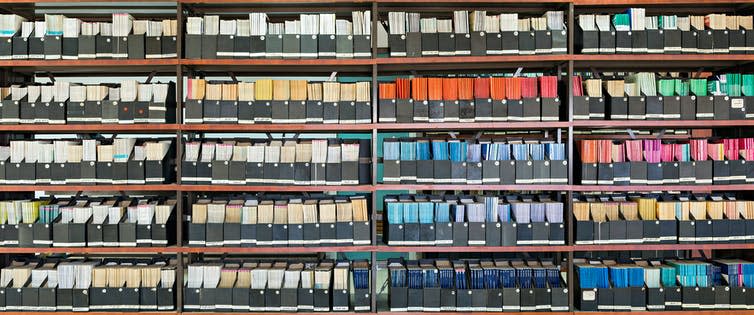What a link between chocolate and Nobel prizes reveals about our trust in scientists

Wouldn’t it be great if chocolate were good for you? It’s no wonder many news outlets leap on any scrap of research that appears to show potential benefits to eating the tasty treat. But the history of such coverage provides a cautionary tale about why we should be wary of scientists’ claims that are reported in the media, as well as the way the stories are framed by journalists.
In 2012, Dr Franz Messerli published a short article in the prestigious New England Journal of Medicine that took a good hard look at the cognitive benefits of chocolate consumption. As chocolate contains flavanols, thought to facilitate brain cell connections and boost thinking skills, such a study seems to make sense.
In his article, Messerli announced the discovery of a significant correlation between the average amount of chocolate eaten in a country and the number of Nobel laureates it produced, relative to population size. With tongue in cheek, he concluded that to enhance cognitive abilities (and consequently its number of Nobel prizes), each country should radically increase the quantity of citizen chocolate intake.
This “study”, however, was meant as nothing more than a droll story and a friendly reminder to colleagues that over-interpreting correlations can lead to incorrect claims.
Didn’t get the joke
Unfortunately, few people understood that Messerli’s “research” was a jest, and soon news reports about the apparent intellectual benefits of eating chocolate flooded screens and newspapers. Journalists took the fact that the article was published in a respected journal as a sign of quality, not realising that the research had been released in a section called “Occasional Notes” earmarked for more jovial contributions.
Meanwhile, fellow scientists were outraged. Why would the New England Journal of Medicine disseminate such a thing? With haste, several researchers refuted that binge-eating chocolate would increase the number of Nobel laureates. They highlighted the absurdity of the claim by pointing out that they could demonstrate an astonishingly high correlation between the number of IKEA stores and Nobel Prize winners.
Since the release of Messerli’s study, articles and letters have been published every year trying to prove or disprove the link between chocolate (or chocolate mixed with milk) and the quota of Nobel Prize winners. A bittersweet Hungarian study even came out in 2019, concluding that the performance of Hungarian scholars does not support the chocolate-Nobel theory.
What’s more, traditional and social media have continuously covered this story, mostly without critical reflection, perpetuating the idea that there might be a link between chocolate and Nobel prizes (or at least national brainpower).
Regrettably, this story isn’t an isolated incident. Much media coverage of science is flawed at best and downright wrong at worst. This is important because scientific misinformation can have adverse effects on individual and societal behaviour – especially during a pandemic.
Out-of-context or oversimplified science can even result in dangerous conclusions, illustrated by the recent claims that the drug hydroxychloroquine could treat COVID-19. Consequently, when such claims are disproven, the public loses trust in scientists and journalists.

Because scientific papers are rarely page-turners or accessible to non-scientists, we typically rely on reporters to make sense of new findings. But while many media outlets report on research, few have dedicated science journalists with the skills and experience to cast a sufficiently critical eye over dubious or difficult-to-interpret results.
Hence a story about scientists’ latest failure to find an explanation for why antimatter didn’t destroy the universe at its creation led to the misleading headline: “‘It should NOT EXIST’ Hadron Collider scientists fear universe could DIE at any moment”.
But is the media really to blame for all of the science-misreadings out there? Though some journalists need to better explain scientific research, scientists too play a role in transmitting the information, and unfortunately, they often do not try to correct misunderstandings. For example, in the case of the chocolate-Nobel story, the scientists involved did little to address the misreadings engulfing mass media.
Offering no corrections only enhances the proliferation of misunderstandings. For example, in 2018, a group of researchers looked at the effects of milk protein on blood glucose levels, and after conducting a small-scale study, concluded that consuming milk protein could decelerate the release of glucose into the blood.
But somehow, this study was sensationalised in the media as groundbreaking research proving that a glass of milk each morning would protect against type 2 diabetes. Once again, the misinterpretation was not corrected: references to the misleading news articles were even proudly displayed on the university’s homepage.
Need to engage
Research has shown that lack of science communication training, and some scientists’ reluctance to engage in outreach all contribute to inaccurate research reporting, which leaves members of the public more open to half-truths and misinformation. In contrast, when scientists do engage in science communication, it can have real impact.
For instance, in 2015, US journalists reported that in Marin County, outside San Francisco, more than 80% of kindergartners were not vaccinated against diseases including polio and measles. Puzzled, researchers began looking into these vaccine refusals. Soon after, an information campaign was mounted, and by engaging the community and rebuilding trust, immunisation rates improved radically, with more than 94% of kindergartners vaccinated in 2019.
If the chocolate-Nobel debacle taught us anything, it’s that all types of scientific publications can be misinterpreted, and scientists should expect these misinterpretations. More importantly, scientists need to recognise that they are also responsible for media and public misunderstandings and science misreadings. This is why researchers should engage more in science communication. No one should base their decisions on over-interpreted soundbites, no matter how tasty they seem.
This article is republished from The Conversation under a Creative Commons license. Read the original article.

Katrine Donois does not work for, consult, own shares in or receive funding from any company or organisation that would benefit from this article, and has disclosed no relevant affiliations beyond their academic appointment.

